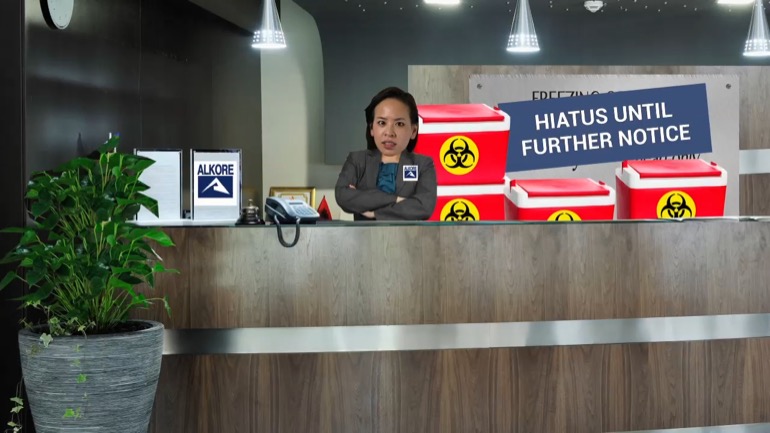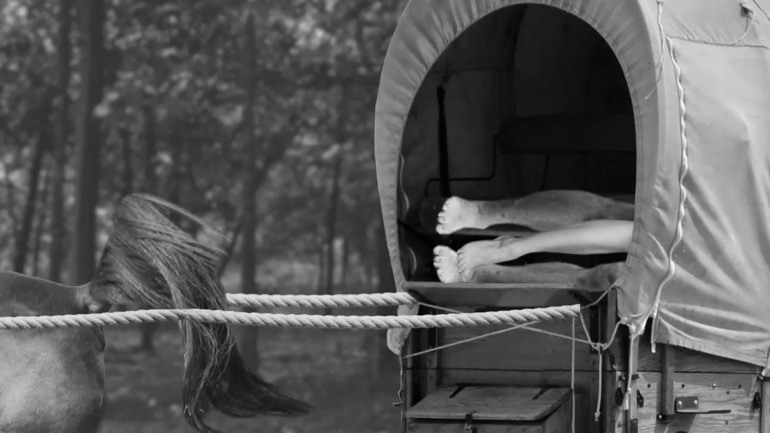ShmoopTube
Where Monty Python meets your 10th grade teacher.
Search Thousands of Shmoop Videos
Cost Accounting Videos 27 videos
What is a Cost: Cost Versus Expense? Cost and expense are pretty similar terms when looking at traditional definitions but they’re a little diffe...
How can unit fixed costs mislead the misled? Unit fixed costs can be misleading because the fixed cost per unit decreases as production increases;...
What is Differential Analysis? Differential analysis is a strategy used to make the best decision. Possible choices are compared to determine which...
Cost Accounting: What are three ways to estimate costs? 0 Views
Share It!
Transcript
- 00:00
and finance Allah shmoop What are three ways to estimate
- 00:05
costs All right people is a long one So listen
- 00:09
up Accounting is easy There really just two lines you
- 00:13
have to worry about You have revenues on top You
- 00:16
know that figure represents the money coming in Pretty simple
Full Transcript
- 00:18
Then you've got expenses yet little different Mohr variables Mohr
- 00:22
Complexities and Mme Or different flavors Will The key driver
- 00:25
of those complexities is performance that is And while less
- 00:28
than perfect the first Tesla's he looked like this The
- 00:31
first space shuttles looked like this The first peanut butter
- 00:35
factory looked like Oh this and the first horseshoeing factory
- 00:38
looked like uh well for this Okay so let's illustrate
- 00:41
We'LL walk backward in business time to a hugely hot
- 00:44
industry in eighteen sixty eight Horse shoeing No not like
- 00:48
that This kind Well before they were primarily used for
- 00:51
good luck or explaining political ideology they were actually used
- 00:55
as shoes Four forces Yes that was a thing back
- 00:59
then People were not making this Think of it like
- 01:02
well you think of a car tire of the car
- 01:04
tire industry today more or less Okay meet Wilbur Horseshoe
- 01:08
entrepreneur He believes that the old way of making horseshoes
- 01:11
is out of date So eighteen forty well in this
- 01:14
process that choose their handmade one by one in a
- 01:17
kind of clay mould that the camera on relentlessly until
- 01:20
they're finally in the shape and form where they are
- 01:22
useful to the problem Lots of manual labor Great for
- 01:25
the delts though In triceps in fact all in at
- 01:28
close to full production of one hundred choose a week
- 01:30
Wilbur's cost per shoe is about a dollar and yeah
- 01:33
dollar back then almost bought you a house Wilbur notes
- 01:36
that there's always a waiting list for shoes like weeks
- 01:38
or months long so long that there's a kind of
- 01:41
a gray market for them Not quite a black market
- 01:44
but a gray one More and more horses are needed
- 01:46
to you know deliver ice and haul SAS Barilla Tio
- 01:50
take courting couples on a romantic rides through the streets
- 01:53
and to do the old fashioned work too So the
- 01:55
demand is therefore horseshoes Wilbur's challenges to supply that demand
- 01:59
with an advantage A product that is the same product
- 02:02
is everyone else's III his point of charity but cheaper
- 02:06
i e His point of difference So Wilbur seeks to
- 02:09
build what will eventually become This idea came from his
- 02:12
grandmama double waffle maker press iron oven thinking before starting
- 02:16
he knew it'd take him ages to craft Well he
- 02:19
needed a budget for the project Turns out Wilbur's grandmama
- 02:22
recently died but don't feel bad She made it to
- 02:24
the ripe old age of thirty eight and she left
- 02:27
some cash behind each of her eleven grandchildren including Wilbur
- 02:31
got one hundred dollars each A virtual fortune back then
- 02:34
So Wilbur made the first of three cost estimates and
- 02:37
figuring out what this project you know would cost i
- 02:40
e The engineering method of costing That's what he used
- 02:42
Well this process gets all detail Ian the specific to
- 02:45
the fundamental elements it takes to build something for the
- 02:48
horse shoeing machine He broke apart one hundred fifty eight
- 02:51
pounds of hard cast heat treated iron and clay mold
- 02:55
that he'd have to build or rather sculpt Yep that
- 02:57
was forty three bucks for that thing that he had
- 02:59
to load up on the really dense oak logs which
- 03:02
burned way hotter and longer than pine Maybe five bucks
- 03:04
there or maybe twenty dollars depending on the season You
- 03:07
know how quickly he went Then He had all kinds
- 03:09
of alls and chisels and Advil for his aching back
- 03:13
Well since it was eighteen sixty eight he just had
- 03:15
to chew on the bark of some tree or drink
- 03:17
laudanum prescribed by the itinerant Dr Pennebaker You know all
- 03:20
that Another twenty bucks Okay Then he went through the
- 03:22
eighty seven steps needed for this multi shoe waffle maker
- 03:25
looking horseshoe thing Ito work He'd have to melt the
- 03:28
steel here than have some kind of to bring it
- 03:30
in from the vat to the mold The mold had
- 03:33
to have some kind of powder in it so the
- 03:35
shoes would pop out easily when he was done Then
- 03:37
he'd have to for the molten steel in the mold
- 03:40
and wait the right amount of time Then press down
- 03:42
and voila ate shoes at a time instead of one
- 03:45
and they'd all pop out all uniformly formed Instead of
- 03:49
the manual style where each one was a little different
- 03:52
He'd pound on them for an eighth of the time
- 03:54
needed for manually made ones And instead of selling them
- 03:57
for a dollar will He could sell them profitably for
- 03:59
only thirty cents each and pretty much likely put everyone
- 04:02
else in town out of business After all he could
- 04:05
make eight hundred shoes a day for thousand a week
- 04:08
instead of just one hundred Everything grew cheaper in this
- 04:11
process not the least of which was his own labor
- 04:13
time In the old days he could make maybe two
- 04:15
shoes an hour and the cost of labor was a
- 04:17
big percentage of the total cost of things But in
- 04:19
this case in an hour with a waffle maker sure
- 04:22
thinking one hour of labour produce something like well one
- 04:25
hundred shoes maybe more The big idea in this first
- 04:28
review of cost the engineering method was that everything was
- 04:32
kind of theoretical That is this method of costing took
- 04:35
every little element of the build process analyzed it assuming
- 04:38
it all worked perfectly the first time from day one
- 04:41
and that the company was in business the next day
- 04:44
it assumed that every process worked optimally so well What's
- 04:48
happening Yeah and he's starting to run out of money
- 04:52
Wilbur here realizes that he should have jettisoned the perfect
- 04:55
looking engineering method and instead gone straight to the account
- 04:58
analysis method of costing when making his budget in the
- 05:01
account analysis it's the processes that are analyzed not the
- 05:04
discrete units of the build Like any engineering method the
- 05:08
focuses just on each unit in a vacuum working it
- 05:11
assumes no structural variability or errors That storm coming that
- 05:16
blows a bunch of dust into the molten steel Yes
- 05:19
for gotten the account analysis method looks at the linkages
- 05:22
between elements like this So in Wilbur's case each process
- 05:25
is put into a bucket like getting the loads of
- 05:27
heating elements for the mold is one thing falling in
- 05:30
the oak keeping it dry being sure nobody steals it
- 05:34
And then the termites are generally kept away and then
- 05:36
heating them up so that the wind doesn't blow them
- 05:39
out or blow the fire to them And we'LL catch
- 05:41
the rest of the barn on fire And that's just
- 05:44
one thing of many What about the process of pouring
- 05:47
the molten steel into the mold Those tubes leak and
- 05:50
that's a problem The leaks cost a fortune heat loss
- 05:53
deal loss a mess on the floor and then repair
- 05:55
of the tubes and most expensively the huge number of
- 05:58
orders that don't get filled so angry customers just leave
- 06:02
and go to the old school competitors So tons of
- 06:05
variables here tons of moving parts in this way of
- 06:07
looking at costs account analysis methods of costing take all
- 06:11
these dark scenarios into account all these outlier situations that
- 06:15
aren't supposed to happen But they dio yeah Murphy's law
- 06:18
baby So think about what each of them cost just
- 06:21
in relation to expected output Like if a spill or
- 06:25
a break in the tubing or poor management of Oakwood
- 06:28
Supply fails And there just isn't enough heat to make
- 06:31
the molten steel or even a flood happens up the
- 06:33
road and makes the barn unworkable for shoeing for awhile
- 06:36
And Wilbur is down an entire day What does that
- 06:39
cost Well of Wilbur normally makes eight hundred choose a
- 06:42
day that he sells for thirty cents and that cost
- 06:44
him twelve cents in direct cost Then he's giving up
- 06:47
eighteen cents times eight hundred shoes or one hundred forty
- 06:51
four dollars in contribution every day of lost productivity That's
- 06:55
a fortune more than Grandmama even left him So downtime
- 06:59
costs a ton here and yet downtime is a regular
- 07:02
part of any business so it has to be accounted
- 07:04
for an estimated And the real question here then is
- 07:07
whether it makes sense for Wilber to spend the money
- 07:09
to hire someone whose job it is full time to
- 07:12
do nothing other than worry about all these fixes meaning
- 07:15
that his chief operating shooing officer her CEO Oso does
- 07:20
nothing other than inspect the equipment and keep replacements on
- 07:22
hand watching over the supply line of oak and then
- 07:25
raw steel deliveries Keeping three sets of repair tubing available
- 07:29
at all times and having the eighteen sixty eight equivalent
- 07:32
of a Swiffer on hand to clean up after spills
- 07:34
and you know so on So if Wilbur hires this
- 07:37
guy for say three hundred dollars a year can this
- 07:40
guy save him from having to full down days If
- 07:43
he can Well then he's worth hiring So that's the
- 07:46
account analysis method of costing It takes into account the
- 07:49
processes and views production or service not indiscreet unit elements
- 07:53
but rather in groups of moves that all come together
- 07:57
to make the product okay moving on the third type
- 07:59
of costing system is called statistical cost estimation and shockingly
- 08:04
it uses statistics as the key driver and figuring out
- 08:07
optimal configurations of resource is in and along the production
- 08:10
line So why you stats here Like how does the
- 08:13
application of stats make for better costing estimates Well simply
- 08:17
put things change Like when Wilbur Shoe Waffler is first
- 08:20
getting off the ground A lot of problems come up
- 08:22
but over time once it's put together and actually producing
- 08:25
well maybe there simply aren't the same high error rates
- 08:27
as there were in the beginning The process gets better
- 08:30
Mohr efficient The problem with account analysis is that decisions
- 08:34
air driven off of whatever happened yesterday or at least
- 08:36
in the last period of analysis for whatever processes failed
- 08:40
with statistics applied broadly longer Previous periods can then be
- 08:45
measured and not just for the cataclysmic failure situation but
- 08:48
for optimizing dated a productivity For example the burning dense
- 08:52
oak wood has to produce a melting temperature of at
- 08:54
least four hundred degrees When the wood is delivered wet
- 08:57
and warm me it takes more wood to produce the
- 09:00
same heat The wood crackles a lot and increases the
- 09:03
need to keep loose strands of dry Hey off the
- 09:06
floor right because they light up fast account analysis might
- 09:09
say Always check the wood Yeah these finer hazards air
- 09:12
dangerous It's expensive to burn extra wood when it's wet
- 09:15
So in all circumstances put someone in charge of inspecting
- 09:18
the wood right But statistical analysis would uncover the fact
- 09:21
that the on ly fires the barn had in the
- 09:24
last say three years happened right after the delivery of
- 09:27
wet wood in February Well now you have evidence that
- 09:30
inspection is only necessary one month out of the year
- 09:33
you just saved a small fortune that one observation driven
- 09:36
by a statistical viewpoint could save days or weeks of
- 09:39
downtime It might also lead to a process change that
- 09:42
further fixes the problem maybe combining incoming wet wood with
- 09:45
previously stored dry wood so that there was always a
- 09:49
blend and thus less risk of starting a barn fire
- 09:52
Well there are all kinds of narrowing lenses through which
- 09:54
to view the statistical reviews of elements of the business
- 09:57
You might look at the wetness of the woods You
- 09:59
might look at things like days since last death inducing
- 10:02
accident to a whole set of ratios like cords of
- 10:05
wood needed produce a thousand shoes and stuff like that
- 10:08
All those numbers are put into a calculator with the
- 10:10
intent to optimize Management of precious resource is in the
- 10:13
process Well one core element with anything stat C You
- 10:17
have to only look at relevant data or data that
- 10:20
is within relevant range of things you can control For
- 10:24
example if there's one hundred year storm that last from
- 10:26
November to May and all the wood one season comes
- 10:29
in wet Well then that data has to get thrown
- 10:32
out because that one season event is so unusual that
- 10:35
if it's numbers air included in making predictions well throws
- 10:38
everything else off It's like trying to base anything physically
- 10:41
done by humans in the water off of whatever stats
- 10:44
Michael Phelps tests would give you right He's outside of
- 10:47
the relevant range of most humans and some dolphins so
- 10:50
you toss out all of his numbers visually Much of
- 10:53
these observations of data get presented in scatter plots are
- 10:56
scattered graphs where a fitted Linus hopefully useful in predicting
- 11:00
future resource allocations so that you go from a trend
- 11:02
that looks like this into a guesstimate set over here
- 11:06
And it basically just tells you that you likely need
- 11:09
a better storage system and covering area to keep your
- 11:11
hot oakwood dry Maybe it even gives you a mega
- 11:14
observation like you should buy your wood a year in
- 11:17
advance and let it dry an entire year And then
- 11:20
you only burned dry wood with way less fire spark
- 11:24
risk Well how would you know to find that data
- 11:27
Well you'd have some minimum number of observations meaning that
- 11:30
if you only had one or two crackly sparkler fire
- 11:33
things of hey catching from wet wood explosions Well that's
- 11:36
not enough in samples to really make an observation or
- 11:39
a least not one that you can count on being
- 11:41
repeated in the future But if you had like eighty
- 11:43
observations well first off Yikes that's a lot of fire
- 11:46
risk things but the upside of burning down your barn
- 11:49
eighty times well it's probably enough of a sample size
- 11:52
to confidently make some predictions and commit to spending like
- 11:55
spending whatever it cost to buy a tarp to keep
- 11:58
your wood dry So you've got three ways to estimate
- 12:00
cost First the engineering method A theoretical look at the
- 12:04
different aspects of production It's like a plan for how
- 12:06
things should work It provides a good sketch but doesn't
- 12:09
take into account much leeway for things not going as
- 12:12
planned Then you've gotta count analysis It looks at the
- 12:15
various processes for producing your product It lets you look
- 12:17
at things that could break down along the production process
- 12:20
But it can be narrowly focused And finally you've got
- 12:23
statistical cost estimation which allows you to take a long
- 12:26
view by crunching various stats You can also find hidden
- 12:30
efficiencies that might not immediately be obvious with other methods
- 12:33
of costing Well of course the statistical method is hard
- 12:36
for Wilber at this point After all his only employees
- 12:39
Main Mast skill is you know counting to ten And 00:12:42.431 --> [endTime] for that he even needs his feet
Related Videos
GED Social Studies 1.1 Civics and Government
What is bankruptcy? Deadbeats who can't pay their bills declare bankruptcy. Either they borrowed too much money, or the business fell apart. They t...
What's a dividend? At will, the board of directors can pay a dividend on common stock. Usually, that payout is some percentage less than 100 of ear...
How are risk and reward related? Take more risk, expect more reward. A lottery ticket might be worth a billion dollars, but if the odds are one in...































